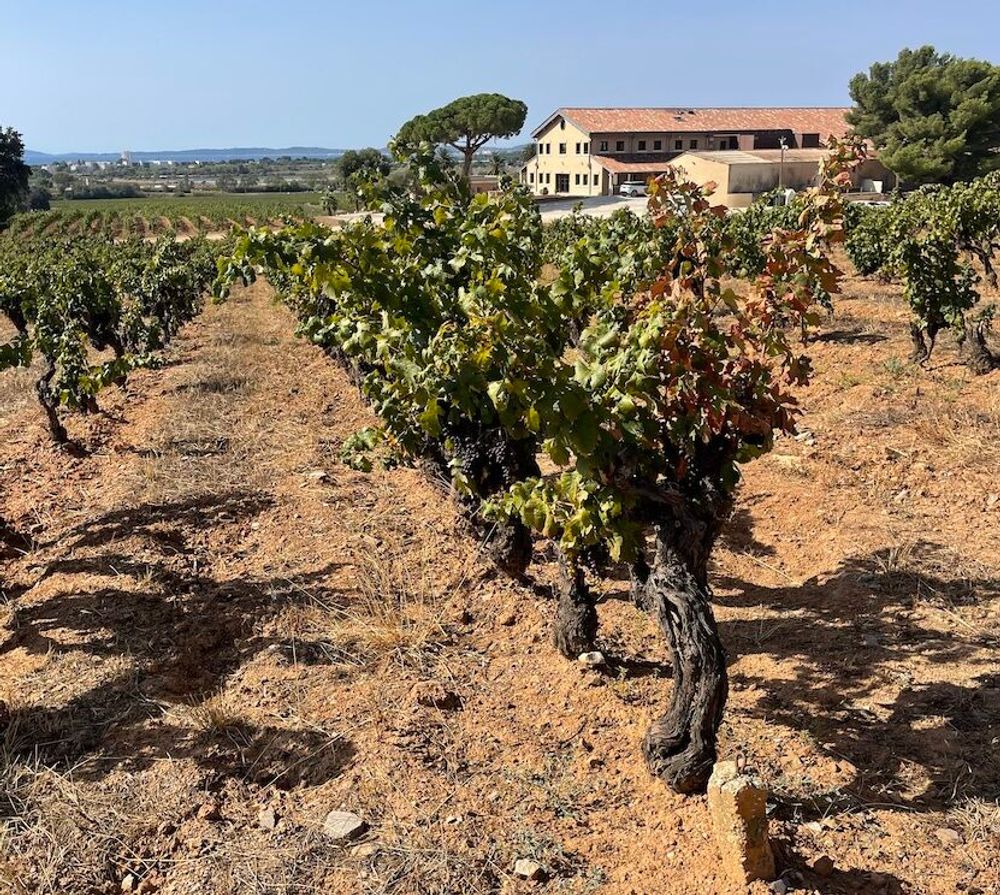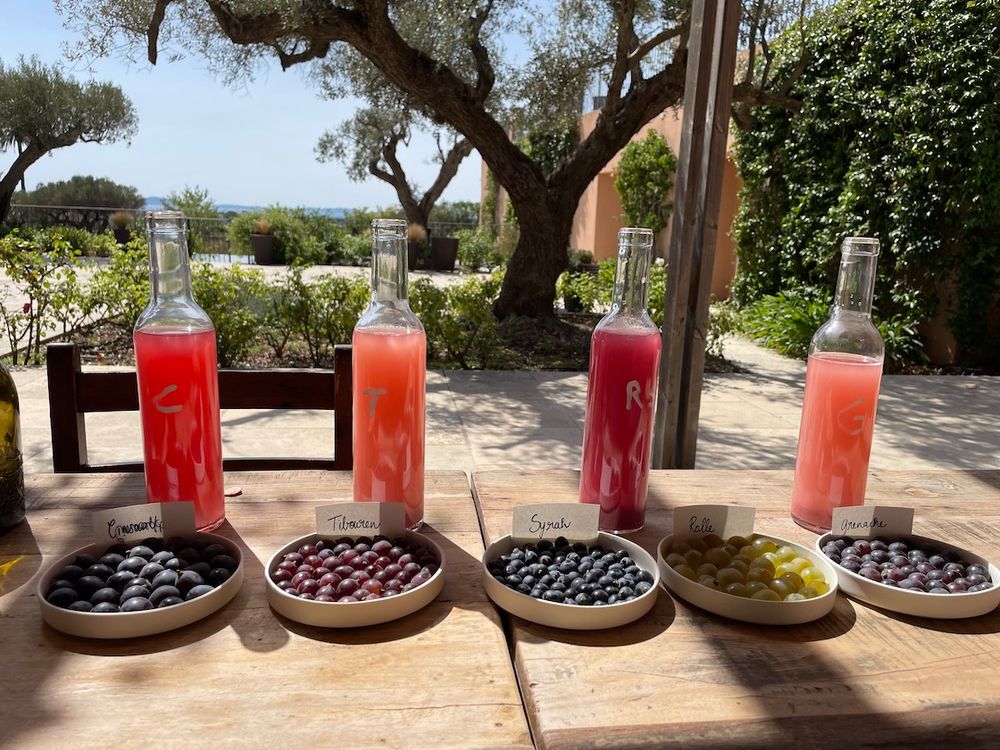“Galoupet is another step in the rosé category’s upwards trajectory,” writes Smart

Galoupet managing director Nadine Fau-Santucci with estate director Mathieu Meyer
“Desirability” is at the core of everything drinks and prestige goods maker LVMH sells. But what’s desirable? Some millennials, for example, clearly feel that the future of the planet matters more to them than what bubbly gets sprayed over podiums at Formula One races.
To solve the conundrum, LVMH, Europe’s most valuable company, has decided that the entire group must make sustainability “synonymous with desirability”. Its corporate reports fret about the animal welfare impacts of its cashmere sweaters. And it’s now going full tilt to produce sustainable wine, specifically rosé at Château Galoupet in Provence.
This new values-led approach amounts to “the new luxury,” explains Nadine Fau-Santucci, managing director of the winery, acquired by the luxury goods conglomerate four years ago.

Galoupet mid-harvest – water seems more precious than wine
We arrive at Galoupet mid-harvest. The staff have all been at work all night picking. In the sunshine, the Mediterranean is glittering – St Tropez is only a few kilometres away. But the land itself is arid and scrubby. Even native plants like rosemary, supposedly well-adapted to the heat, are suffering grievously. Irrigation of the vines has become unavoidable. Suddenly, water seems even more precious than wine.
So it’s a bit of a relief to savour the produce of the château. Since we are in the middle of the 2023 vendange, we are able to sample the principal just-harvested grapes: Cinsault, Tibouren, Syrah, Rolle (aka Vermentino) and Grenache. Plus we are able to taste the brightly coloured press from the grapes.

First glimpse of the 2023 harvest at Galoupet
LVMH has around a score of drinks brands including recently acquired rosé maker Château d’Esclans about an hour away. But Galoupet is different. It’s a bit of a laboratory, here to show how far the prestige wine business can be made sustainable and whether environmental-awareness can really become a main selling point of ultra-premium brands. Doubtless the suits back at LVMH headquarters are watching the results closely.
The vineyard comprises 77 hectares, it’s a cru classé, and began converting to organic in 2020. It’s able to indulge in micro-viniculture, making batches in a small quantities on a plot-by-plot basis according to grape, age of vine, soil and so on. It currently produces just the one wine for each vintage, the Château Galoupet Cru Classé Rosé. The 2022 vintage which we are tasting is quite high in alcohol at 14% ABV and it’s certainly not remotely cheap, retailing at around £50 a bottle in the UK. It’s made it to the wine list at the multi-starred Le Manoir aux Quat’Saison restaurant, apparently.
So how much does the wine impress?

Galoupet’s distinctive brown bottle is largely made from recycled glass
Well, this is a true gastronomic wine, crisp with immense intensity and real length. There are notes of white fruits, citrus, and bitter almonds plus floral aromas. It’s nicely structured with excellent minerality and a long finish.
As a youthful wine, there’s a plenty of fruit with hints of grapefruit. The latter will disappear as it ages and the wine will become more spicy. The Tibouren adds some ripe peach and further enhances the ageing capacity.
Fau-Santucci declares proudly,“We have gone beyond easy drinking by the pool”. Agreed, but, importantly, none of the vivacious fun of rosé has been lost either.
For a marketing-led company like LVMH, the bottle is an all-important statement. Here Galoupet has a winner. The lightweight brown bottle made largely from recycled glass looks surprising opulent, itself an object of desire.
Galoupet is another step in the rosé category’s upwards trajectory. For the connoisseur, the wine may not compete with the top-flight white and reds from more traditional prestige regions. But tastes are shifting, with one in three bottles of wine sold in France now pink. As it vies to establish itself at the front of the prestige rosé pack, Galoupet has a fair wind behind it.
































